Children’s Thinking Reading Answers
7 min read
Updated On
-
Copy link
Table of Contents

Limited-Time Offer : Access a FREE 10-Day IELTS Study Plan!
The Reading Module of the IELTS can be the top scoring category, with diligent practice. To achieve the best results in this section, you must understand how to approach and answer the different Question types in the Reading Module. By solving and reviewing Sample Reading Questions from past IELTS papers, you can ensure that your Reading skills are up to the mark.
The Academic passage ‘Children’s Thinking’ is a reading passage that appeared in an IELTS Test.
Ideally, you should not spend more than 20 minutes on a passage. Let’s see how easy this passage is for you and if you’re able to make it in 20 minutes. If not, try more IELTS reading practice tests from IELTSMaterial.com
Children’s Thinking
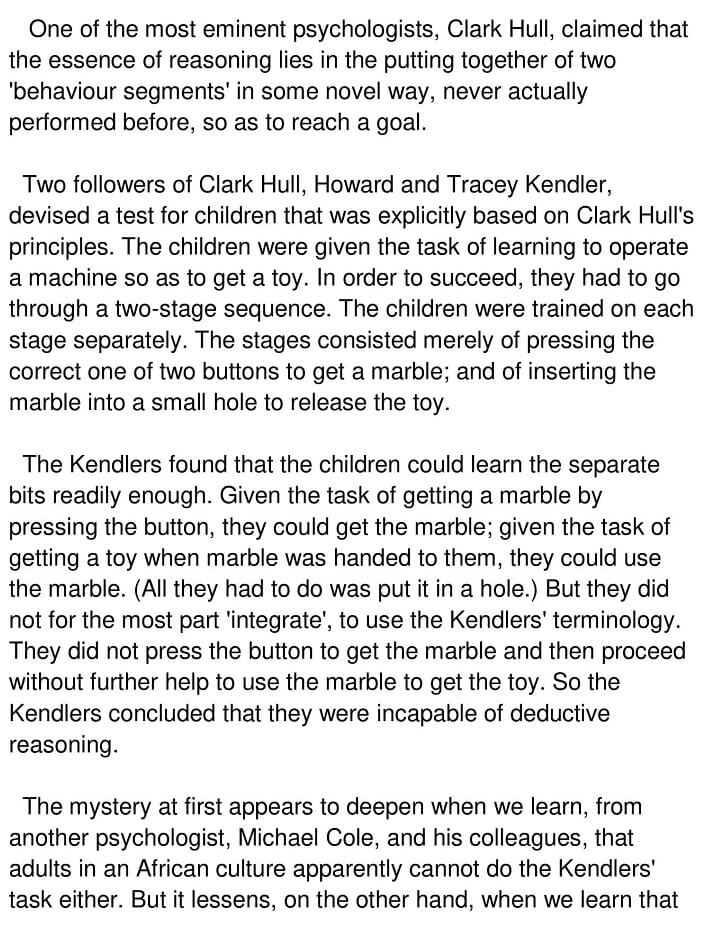
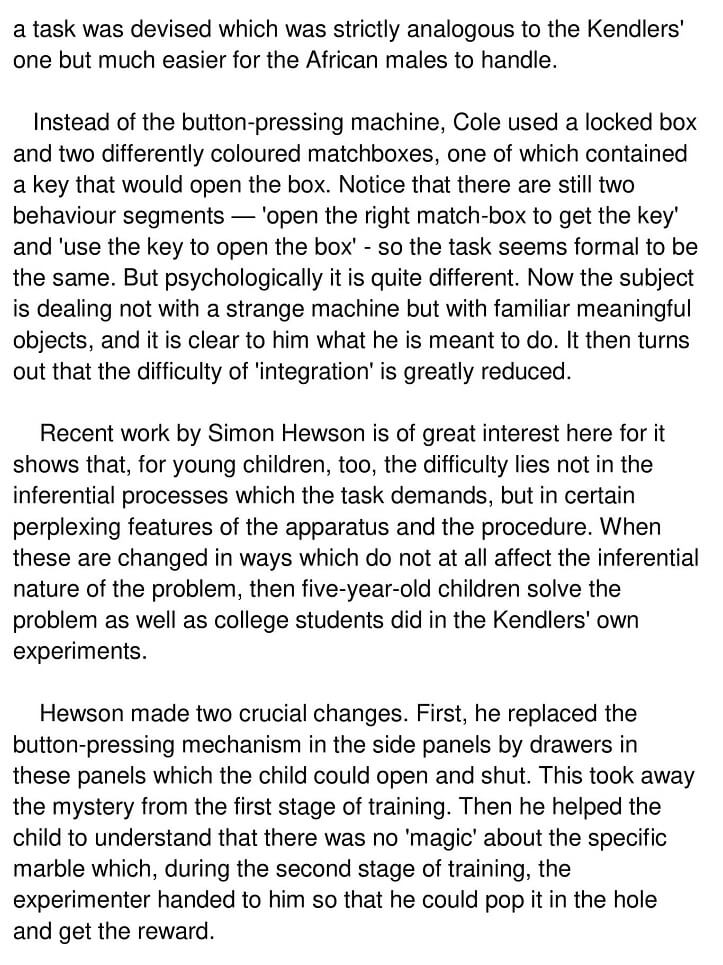
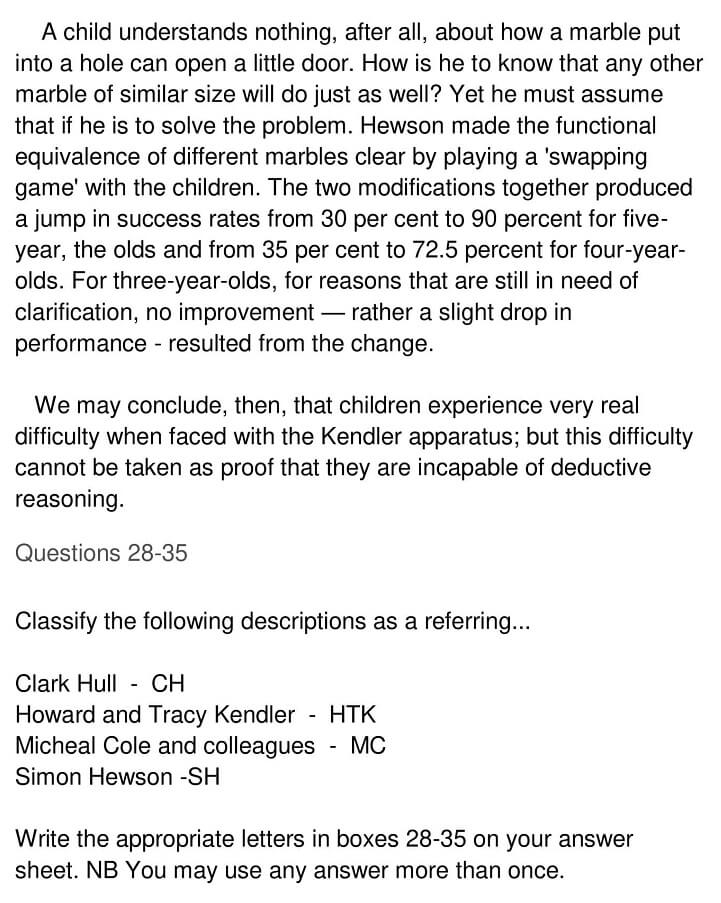
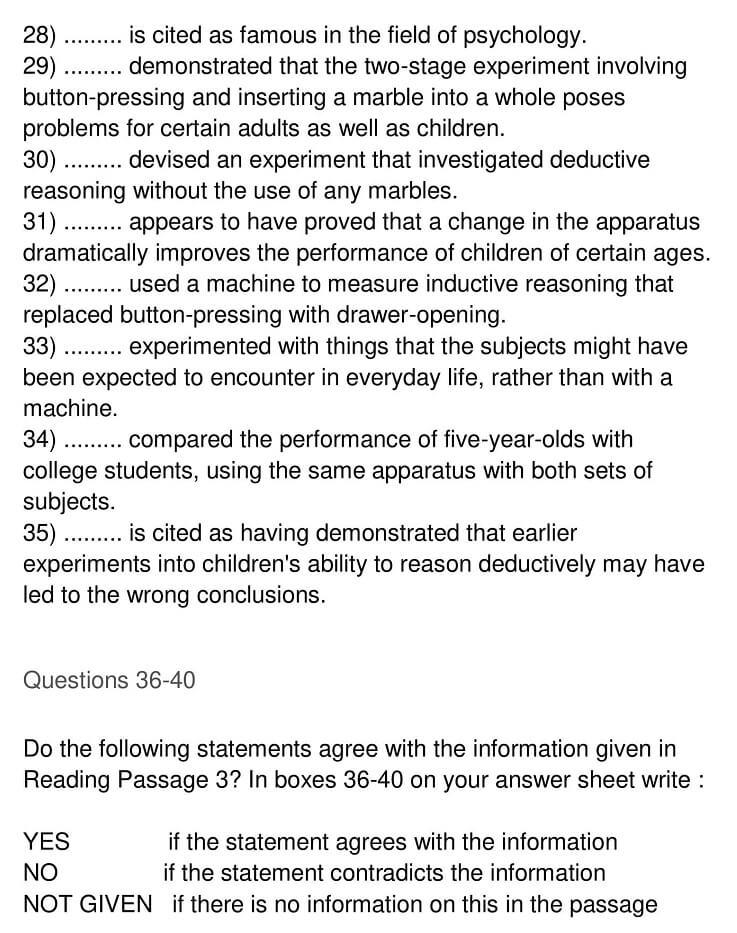
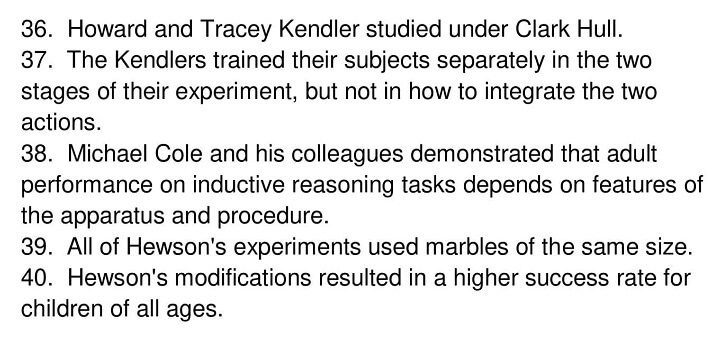
Answers
| Question Number | Answers | Explanation |
|---|---|---|
| 28. | CH | In paragraph 1, it is cited that one of ‘the most eminent’ (famous) ‘of psychologists’, Clark Hull’ claimed that the essence of reasoning lies in the putting together of two ‘behaviour segments’ in some novel way. Hence, the answer is CH (Clark Hull). |
| 29. | MC | The third paragraph mentions the Kendlers found that the ‘children’ could learn the separate bits of the Kendlers’ task of ‘getting a marble by pressing the button’ they could get the marble; given the task of getting a toy when a marble was handed to them, they could use the marble. (All they had to do was ‘put it in a hole’.) But, they (children) ‘did not press the button to get the marble’ and then proceeded without further help to use the marble to get the toy. Later in paragraph 4, it is given that psychologist, ‘Michael Cole, and his colleagues’, that ‘adults’ in an African culture apparently ‘cannot do the Kendlers’ task’ (two-stage experiment involving button-pressing and inserting a marble into a hole) ‘either’ (previously it is mentioned the children are incapable). Hence, the answer is MC (Micheal Cole and colleagues). |
| 30. | MC | In paragraph 5 it is revealed that ‘instead of the button-pressing machine’, ‘Cole’ used a locked box and two differently coloured matchboxes, one of which contained a key that would open the box. Now the subject is dealing not with a strange machine but with familiar meaningful objects, and it is clear to him what he is meant to do. It then turns out that the ‘difficulty of ‘integration’ is greatly reduced’ (deductive reasoning). Hence, the answer is MC (Micheal Cole and colleagues). |
Unlock All Answers
| 31. | SH | Paragraph 6 brings out the fact that recent work by ‘Simon Hewson’ shows that, for ‘young children’, the difficulty lies not in the inferential processes which the task demands, but in ‘certain perplexing features of the apparatus and the procedure’. When ‘these are changed’ in ways which do not at all affect the inferential nature of the problem, then ‘five-year-old children solve the problem’. Later in paragraph 8, it is added that he made the ‘functional equivalence of different marbles clear’ by playing a ‘swapping game’ with the children. The ‘two modifications’ (change in the apparatus) together ‘produced a jump in success rates’ (dramatically improves) from ‘30 percent to 90 percent for five-year olds and from 35 percent to 72.5 per cent for four-year-olds’ (performance of children of certain ages). Hence, the answer is SH (Simon Hewson). |
| 32. | SH | In paragraph 6, it is mentioned that recent work by ‘Simon Hewson’ shows that, for ‘young children’, the difficulty lies not in the ‘inferential processes’ (inductive reasoning) which the task demands, but in ‘certain perplexing features of the apparatus and the procedure’. Therefore, in paragraph 7, the two crucial changes are stated. First, he ‘replaced the button-pressing mechanism in the side panels by drawers’ in these panels which the child could open and shut. Then, he helped the child to understand about the specific marble which, during the second stage of training, the experimenter handed to him so that he could pop it in the hole and get the reward. Hence, the answer is SH (Simon Hewson). |
| 33. | MC | Paragraph 5 points out that Cole used a ‘locked box and two differently coloured matchboxes’, one of which contained a key that would open the box. Now the subject is dealing ‘not with a strange machine but with familiar meaningful objects’. Hence, the answer is MC (Micheal Cole and colleagues). |
| 34. | SH | Paragraph 6 refers to the recent work by ‘Simon Hewson’ which is of great interest for it shows that, for young children, the difficulty lies not in the inferential processes which the task demands, but in certain perplexing features of the apparatus and the procedure. When ‘these are changed’ (certain perplexing features of the apparatus and the procedure) in ways which do not at all affect the inferential nature of the problem, then ‘five-year-old children solve the problem’ as well as ‘college students did in the Kendlers’ own experiments’ (compared the performance of five-year-olds with college students). Hence, the answer is SH (Simon Hewson). |
| 35. | SH | Paragraph 6 points out that the recent work by ‘Simon Hewson’ shows that, for young children, the difficulty lies not in the inferential processes which the task demands, but in certain perplexing features of the apparatus and the procedure.Later in paragraph 7, the two crucial changes are stated. Moreover, in paragraph 8, it is added that he made the functional equivalence of different marbles clear by playing a ‘swapping game’ with the children which ‘produced a jump in success rates’. Finally, in paragraph 9, it is concluded that children experience difficulty when faced with the ‘Kendler apparatus’ (earlier experiments); but this ‘difficulty cannot be taken as proof that they are incapable of deductive reasoning’ (children’s ability to reason deductively may have led to the wrong conclusions). Hence, the answer is SH (Simon Hewson). |
| 36. | Not Given | In paragraph 2, it is mentioned that ‘two followers of Clark Hull’, ‘Howard and Tracey Kendler’, devised a test for children that was explicitly based on Clark Hull’s principles.But, there is no reference if they had studied under Clark Hull. So, the information is not given in the passage and the answer is ‘NOT GIVEN’. |
| 37. | Yes | In paragraph 3, it is revealed that the Kendlers found that the ‘children could learn the separate bits readily’ (trained their subjects separately in the two stages of their experiment). Given the task of getting a marble by pressing the button they could get the marble and given the task of getting a toy when a marble was handed to them, they could use the marble. (All they had to do was put it in a hole.) But they ‘did not for the most part ‘integrate’’ (not trained in how to integrate the two actions.), to use the Kendlers’ terminology. They did not press the button to get the marble and then ‘proceed without further help’ to use the marble to get the toy. Hence, the statement agrees with the information and the answer is ‘Yes’. |
| 38. | Yes | In paragraph 4, it is written that psychologists, Michael Cole and his colleagues stated that ‘adults in an African culture apparently cannot do the Kendlers’ task’. Later, in paragraph 5, it is mentioned that, instead of the button-pressing machine, Cole used a locked box and two differently coloured matchboxes, one of which contained a key that would open the box. So, the subject (adults) is dealing ‘not with a strange machine but with familiar meaningful objects’, and it is clear to the adults what they are meant to do. Hence, the statement agrees with the information and the answer is ‘Yes’. |
| 39. | Yes | In paragraph 8, the writer discusses Simon Hewson’s experiment and how it succeeded. It puts forward the fact that a child understands nothing about how a marble put into a hole can open a little door. How is he to know that any other marble of similar size will do just as well? Yet he (Henson) ‘must assume that if he is to solve the problem’.
Hence, the statement agrees with the information and the answer is ‘Yes’. |
| 40. | No | In paragraph 8, it is suggested that the ‘two modifications’ together produced a jump in success rates from 30 percent to 90 percent for five-year olds and from 35 percent to 72.5 per cent for four-year-olds. But, for ‘three-year olds’, there was ‘no improvement, rather a slight drop in performance’ that resulted from the change. As the statement contradicts the information in the passage, the answer is ‘No’. |
Check More IELTS Reading Answers
Also check :
Practice IELTS Reading based on question types

Start Preparing for IELTS: Get Your 10-Day Study Plan Today!
Recent Articles

Nehasri Ravishenbagam

Haniya Yashfeen

Haniya Yashfeen

Haniya Yashfeen
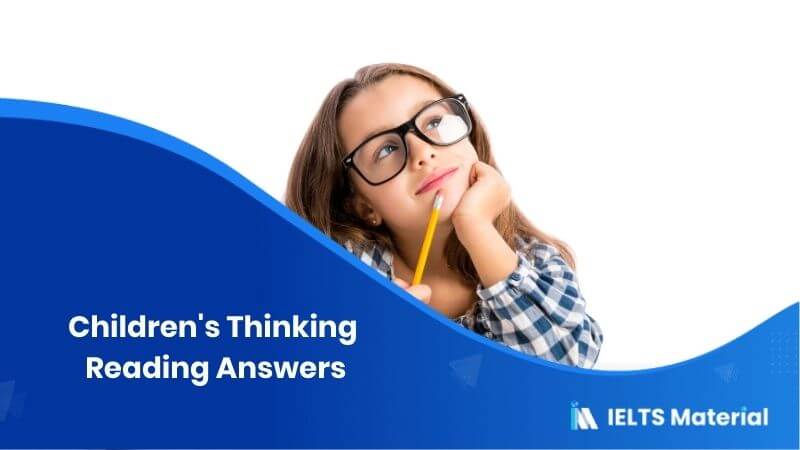



Post your Comments